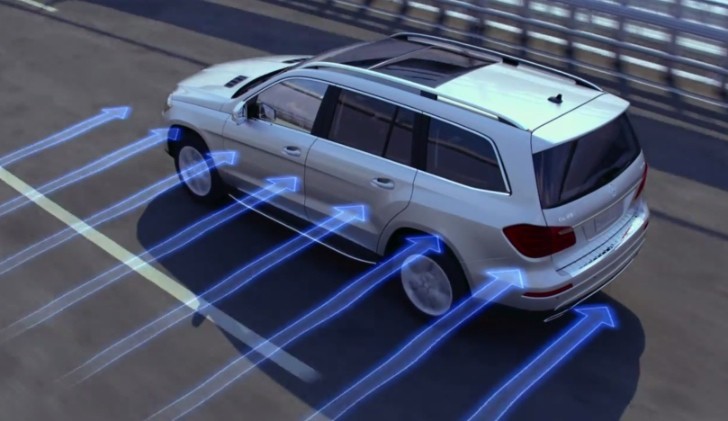Drivers of station wagons, SUVs, vans and large cars in general are probably well familiar with the annoyance and even driving insecurity sometimes brought by sudden strong gusts of wind that act on the sides of their vehicle.
Crosswinds are not only unpleasant for the drivers and passengers of a taller vehicle, but they can sometimes be downright dangerous, not necessarily by themselves but because of the reaction – or, better yet, the overreaction – they cause from the driver.
Owners of certain Mercedes-Benz vehicles, such as the GL-Class, the S-Class or the refreshed Sprinter, can rest assured though, because their cars come equipped in standard with a technology called Crosswind Assist.
As its name implies, Crosswind Assist helps prevent all the nasty things that comes with intense crosswinds while driving on the highway, and it does that with the help of sensors also used for the Electronic Stability Program, which was also introduced by Mercedes-Benz for the first time.
In short, the Crosswind Assist system can minimize the lane displacement of the vehicle during critical wind conditions or when a large truck is passing the car, for example, and the way it does that is not felt in any way by the passengers.
If it records strong gusts of wind acting on the car, a range of course-corrective individual brake applications on each wheel are made in order to prevent the vehicle from being pushed out of its desired course.
Depending on the situation, the brakes are applied on the wheels opposite of the ones facing the crosswind, while the braking force is entirely based on the strength of the wind's force. In case we weren't specific enough, the following animation from Mercedes-Benz should clear everything up.
Owners of certain Mercedes-Benz vehicles, such as the GL-Class, the S-Class or the refreshed Sprinter, can rest assured though, because their cars come equipped in standard with a technology called Crosswind Assist.
As its name implies, Crosswind Assist helps prevent all the nasty things that comes with intense crosswinds while driving on the highway, and it does that with the help of sensors also used for the Electronic Stability Program, which was also introduced by Mercedes-Benz for the first time.
In short, the Crosswind Assist system can minimize the lane displacement of the vehicle during critical wind conditions or when a large truck is passing the car, for example, and the way it does that is not felt in any way by the passengers.
If it records strong gusts of wind acting on the car, a range of course-corrective individual brake applications on each wheel are made in order to prevent the vehicle from being pushed out of its desired course.
Depending on the situation, the brakes are applied on the wheels opposite of the ones facing the crosswind, while the braking force is entirely based on the strength of the wind's force. In case we weren't specific enough, the following animation from Mercedes-Benz should clear everything up.


